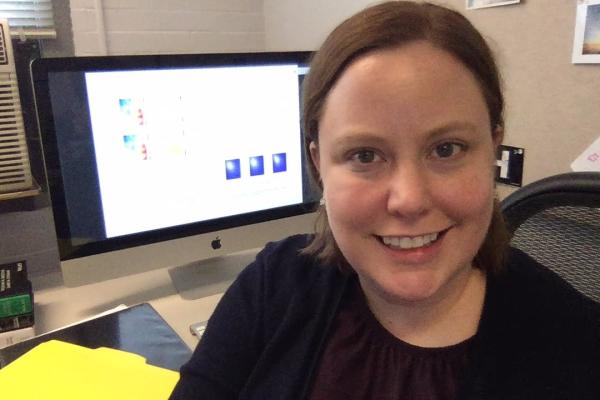Statistics Professor Leads High-Impact Study of Adolescent Activity Patterns

Kate Calder, professor of statistics, leads a team of Ohio State researchers conducting an interdisciplinary, five-year study of adolescent health in an urban environment. The team, funded by a $1,553,888 grant from the National Institutes of Health's Eunice Kennedy Shriver National Institute of Child Health and Human Development, includes Christopher Browning, professor of sociology; Srinivasan Parthasarathy, professor of computer science and engineering; and Bethany Boettner, senior research associate in the Institute for Population Research (IPR).
Study results will have broad applicability to problems ranging from the flow of information in social networks to the spread of infectious diseases across cities.
Their first-of-its-kind study aims to link geographic locations to health-science research by focusing on “co-location” networks, defined by locations of an individual’s routine activities. These do not indicate direct contact between individuals at specific geographic locations, but rather the potential for contact and shared experiences based on proximate routine activities — not necessarily of the same type.
“We are particularly interested in measuring exposure to violence and to social and physical disorder — visible cues of decline: graffiti, litter, homelessness, prostitution and public drinking — and exploring the relationship between these exposures and physiological stress,” Calder says.
“With growing recognition of the relevance of these co-location networks to health and wellbeing and increasingly available data, there is a significant need for novel statistical methodology to examine co-location network data. We will use supplementary data sources to refine inferences based on observational data.”
Their study is focused on co-location networks of Franklin County adolescents, using data from the ongoing Adolescent Health and Development in Context (AHDC) Study conducted by Browning, Calder, and other collaborators and administered by Ohio State’s Center for Human Resources Research and IPR.
“What makes this project so dynamic,” Calder said, “is our goal to incorporate external information from social media into our analyses.”
Calder’s team aims to develop data-mining methods to identify potential activity-pattern motifs and coincident activity-pattern profiles from social media, which contain a wealth of information relevant to studying co-location networks. Information gathered can be either direct, such as users' “geo-tagged” social media posts, or indirect, such as posts mentioning a particular location (even in a colloquial manner) or another individual’s presence.
Combining social survey methods, smartphone-based GPS, smartphone-administered Ecological Momentary Assessment (which captures real-time measures of location, social network partner presence, activities, risk behaviors, and mood), and bio-measure data collection, the AHDC Study provides rich information about both the co-location network of adolescents and their consequential health exposures.
“While data from the AHDC Study is the primary motivation for the development of the proposed statistical and data mining methodology, these tools will have broad applicability to problems ranging from the flow of information in a social network to the spread of infectious diseases across cities,” Calder said.
